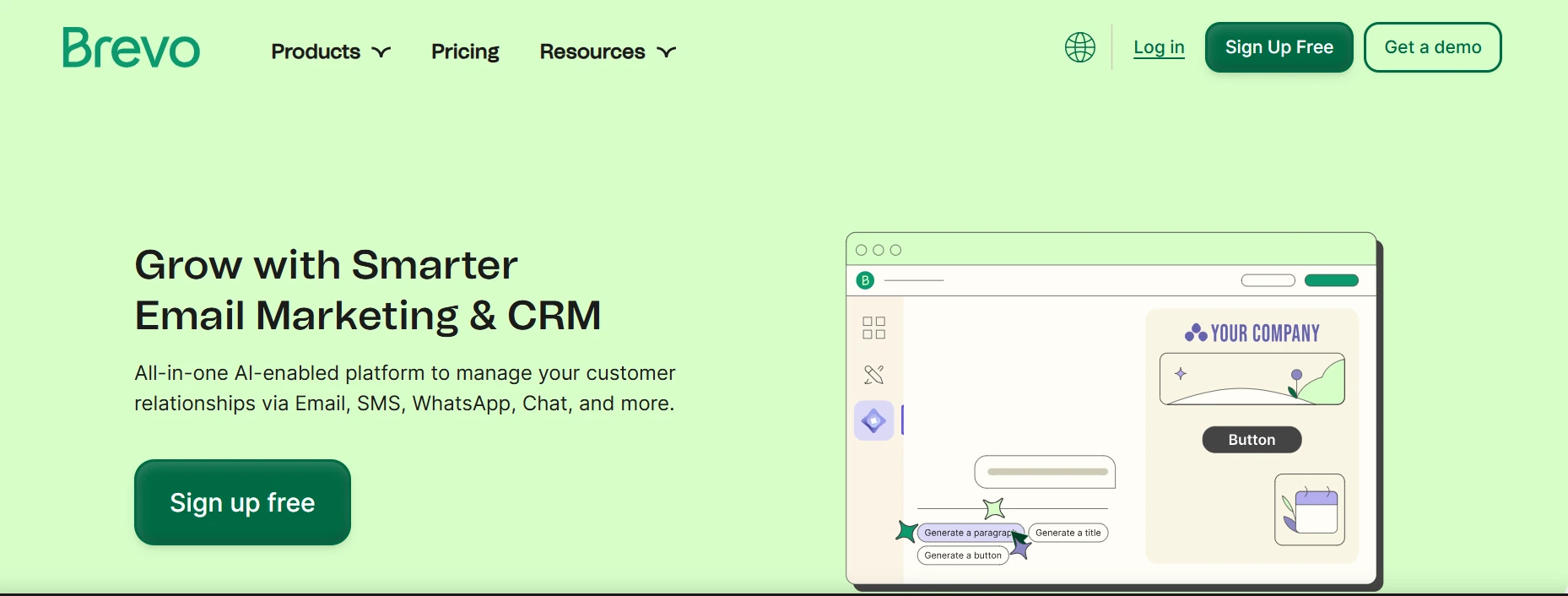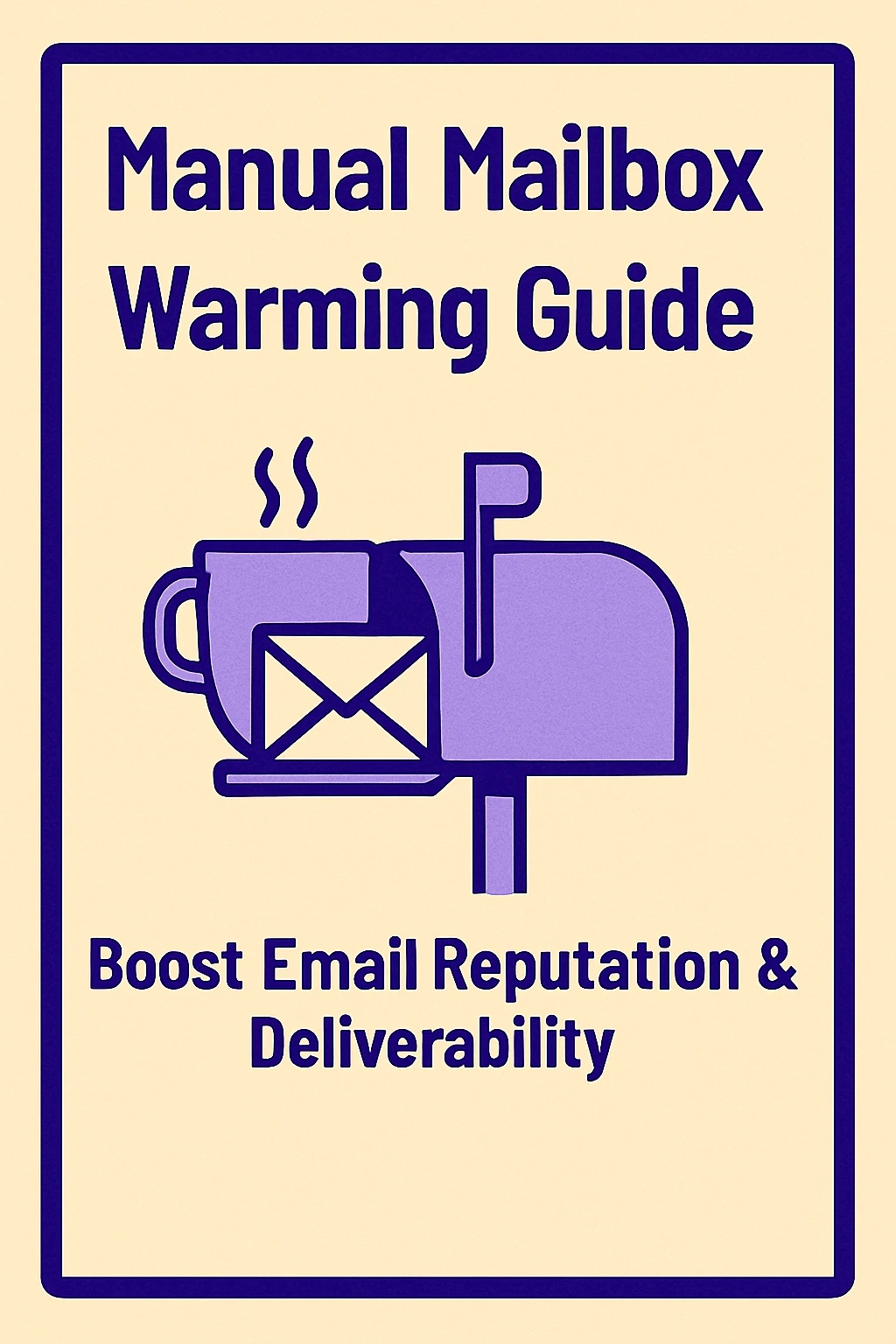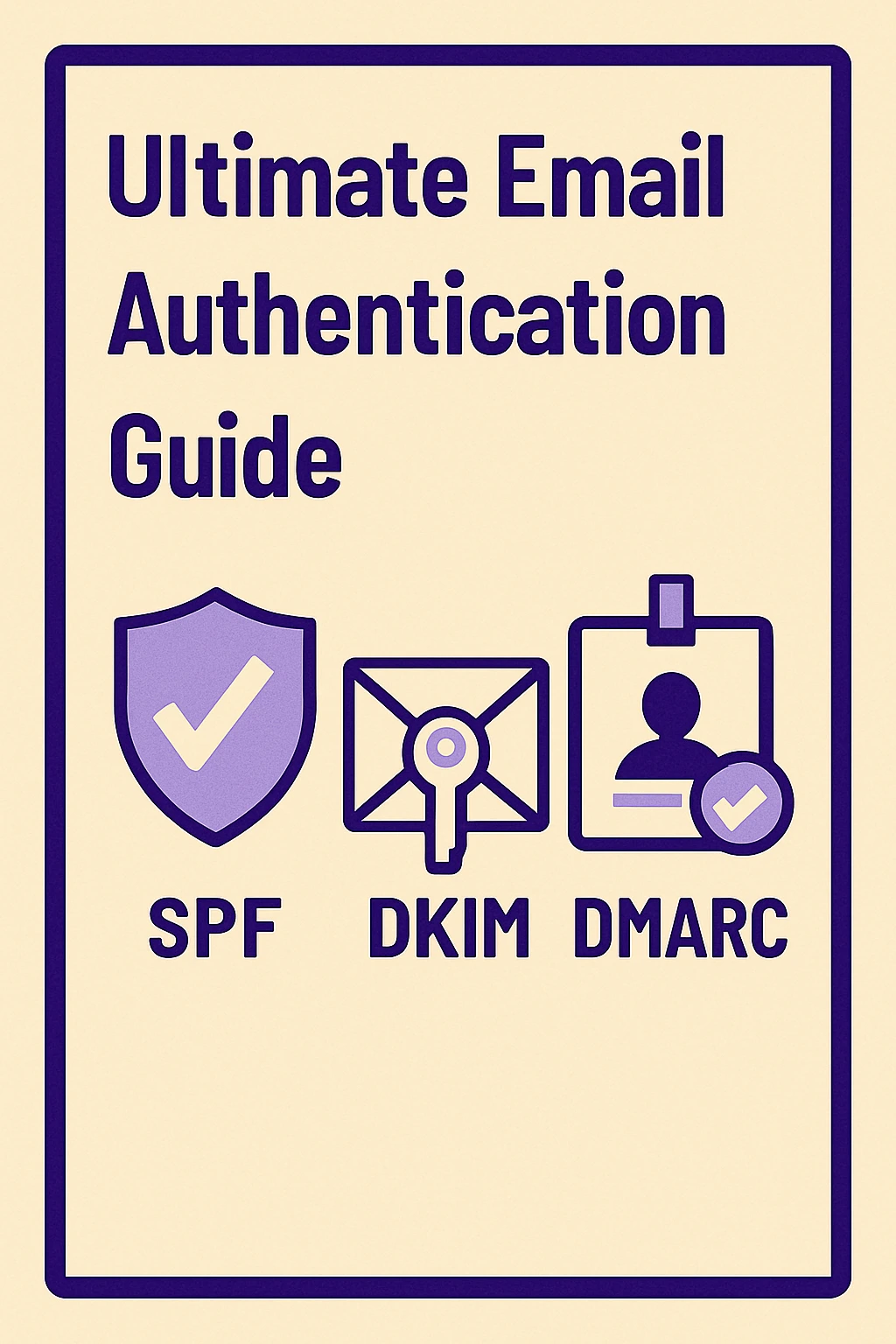Best Cold Email Tools for Startups in 2025 That Work
In 2025, cold email remains one of the most effective and budget-friendly outreach methods for startups. This guide explores the key benefits of cold email over paid advertising, outlines what features matter most for early-stage teams, and evaluates whether Mail Reef truly delivers for startups. We provide a deep dive into Mail Reef’s features, pricing, pros, and cons—followed by a comparison of the top alternatives like Mailkarma.ai, Instantly.ai, Smartlead.ai, QuickMail.io, GMass, and Mailreach.io. Whether you're a solo founder or a growing team, this article helps you confidently choose the right cold email platform based on your goals, stage, and budget. From inbox placement to automation and CRM integration, you’ll find everything you need to run cold email campaigns that work.

Finding the right cold email tool as a startup in 2025 isn’t just about flashy features—it’s about choosing something that fits your pace, your pocket, and your vision. Whether you’re a solo founder chasing your first 50 leads or a small team preparing for launch day, your email outreach tool should simplify your work, not complicate it.
This guide breaks down why cold email still works incredibly well, where Mail Reef stands in the mix, and which tools are worth considering as you scale. Let’s cut through the noise and help you pick a tool that drives results without draining your resources.
Why Cold Email Still Works for Startups in 2025
Cold Email vs. Paid Ads: Which Is Smarter?

For startups watching every dollar, cold email continues to outshine paid advertising. While social media ads and search campaigns can eat up a budget quickly—with no guarantee of conversions—cold email is more targeted and personal. You’re reaching out directly to potential customers, not hoping they scroll past your ad.
Done right, cold email builds real relationships. It lands in a space your prospects already check every day: their inbox. It’s direct, efficient, and allows you to speak to prospects one-on-one—even at scale.
Why Personalization and Deliverability Matter More Than Ever
Inboxes today are flooded. To stand out, your emails must feel tailor-made and, more importantly, arrive in the inbox at all. Startups—especially those using fresh domains—are vulnerable to deliverability issues. That’s why choosing a tool with built-in warm-up systems and spam protection isn’t a luxury. It’s a necessity.
What Startups Should Look for in a Cold Email Tool
You don’t need everything—just the right things. For early-stage startups, the ideal tool should offer:
- Simple, no-fuss setup
- Affordable pricing plans
- Inbox warm-up and domain health features
- Easy campaign building tools
- CRM or lead tracking integrations (optional but useful)
Starting with the right tool avoids painful migrations later and ensures your campaigns run smoothly from day one.
What Is Mail Reef and Who Is It For?
Mail Reef Overview
Mail Reef is designed to help your emails land where they’re supposed to—inboxes, not spam folders. It focuses heavily on warm-up processes and protecting your domain reputation, making it perfect for teams just getting started.
Key Features Include:
- Email warm-up with human-like behavior
- Deliverability score dashboards
- Spam keyword flagging
- Inbox rotation to avoid blacklists
It’s built for startups using new domains or those testing the waters of cold email outreach.
Why It’s a Popular Choice Among Founders
Early-stage founders love Mail Reef because it’s low-maintenance and easy to understand. You don’t need to be a deliverability expert—it handles the background work for you. It’s like a training ground before you graduate to more complex outreach tools.
Mail Reef Pricing in 2025

Mail Reef offers flexible pricing based on how many inboxes and how much automation you need. Lower tiers suit beginners, but as your campaigns grow, you may find yourself needing the advanced features of higher-priced plans. It's a smart entry point, but not necessarily a long-term solution for scaling teams.
Pros and Cons of Mail Reef
Pros:
- Very beginner-friendly
- Excellent email warm-up and deliverability tracking
- Lightweight and focused
Cons:
- No built-in campaign automation
- Lacks CRM integrations
- Costs can increase quickly as your needs grow
Top Mail Reef Alternatives for Startups in 2025
Let’s explore some tools that offer more depth, scale, or affordability depending on your needs.
1. Mailkarma.ai — Best for Deliverability Support

What It Does: Mailkarma focuses on reputation monitoring and spam testing, helping you ensure that your email infrastructure is in top shape before launching your campaigns.
Key Features:
- Sender Score Checking: Monitor your sender reputation.
- DNS and Authentication Checks: Ensure proper DNS setup and authentication for better deliverability.
- Blacklist Monitoring: This helps you monitor if your domain gets blacklisted.
- Spam Filter Analysis: Helps identify potential spam issues before sending emails.
Pricing:
Mailkarma offers flexible, volume-based pricing to match your sending needs. Plans start at just $2.50 per inbox (Google or Microsoft Outlook). For advanced features and higher volumes, custom quotes are available — reach out directly or visit Mailkarma.ai for full details.
Pros:
- Great for pre-send diagnostics.
- Provides valuable insights into improving deliverability.
- Easy to use and set up.
Cons:
- Not a complete cold outreach platform.
- Requires integration with other email tools for sending campaigns.
2. Mission Inbox
Mission Inbox is built specifically for businesses that care deeply about email deliverability and inbox placement. It gives users rotating SMTP IPs, spam-checking tools, and allows unlimited domains and mailboxes under one plan. This makes it perfect for teams sending large volumes of cold or outbound emails and looking to manage multiple brands or campaigns under one infrastructure.
Best for: Email marketers, agencies, and outreach teams managing multiple domains and seeking strong inbox delivery.
Pricing:
Starts at $250/month for 5 SMTP IPs, unlimited domains/mailboxes, and 25 inbox placement credits.
Features:
SMTP IP rotation + auto-healing
Domain/mailbox integrations
Inbox placement tests & deliverability monitoring
Pros
- Strong focus on deliverability
- Unlimited domains/mailboxes
- Scalable with included IP pool
Cons
- Higher starting cost ($250/mo)
- “Coming soon” features not yet available
3. Infraforge
Infraforge offers a custom-built email infrastructure, tailored for advanced users who want to run their own SMTP environment with more control over IP reputation, email warm-up, DNS settings, and automation pipelines. While pricing isn’t listed publicly, its offering is aimed at power users and enterprise-grade infrastructure managers who want deep email stack customization.
Best for: Tech-savvy teams, developers, or companies who want a fully managed but deeply configurable infrastructure.
Custom pricing model tailored to infrastructure needs — contact sales for a quote based on usage and features.
Features
- Custom SMTP infrastructure
- Likely IP management, domain setup, automation tools
Pros
- Tailored infrastructure for serious senders
- Enterprise-ready
Cons
- No clear public pricing
- Suited for larger teams—with complexity
4. Zapmail
Zapmail is a low-cost email infrastructure platform that works by reselling Google Workspace mailboxes with built-in automation for setup and provisioning. While affordable, its delivery reputation depends on non-US IP addresses, which may not perform as well for cold outreach. It’s ideal for freelancers and small businesses who need a plug-and-play email solution without diving into complex infrastructure.
Best for: Solopreneurs or resellers needing Gmail-based SMTP at the lowest price point.
Pricing:
$3 per mailbox/month, or $2.50/month when billed annually; includes Google Workspace integration.
Features
- Google Workspace reseller with automated setup
- SMTP mailbox provisioning via reseller club
Pros
- Low cost per mailbox
- Quick deployment
Cons
- Uses non-US IPs = poorer deliverability
- Potential reputation issues via resold accounts
5. Brevo

Brevo is an all-in-one marketing platform that includes email campaigns, SMS marketing, CRM features, and marketing automation. It offers an intuitive email builder, list segmentation, and workflow automation, but it’s not optimized for cold email. Instead, it shines as a broadcast email platform for warm lists and eCommerce marketing.
Best for: Small to mid-sized businesses, newsletters, product marketers, and lifecycle email campaigns.
Pricing:
Offers a free plan with 300 emails/day, paid plans from $25/month for 20K emails, and $65/month for advanced features.
Features
- All-in-one tool: SMTP, campaigns, marketing automation, SMS, CRM
- Landing pages, A/B testing, multi-channel outreach
Pros
- Free starter tier with 100K contacts
- Multichannel and transactional capability
Cons
- Template builder and UI issues
- Reports of poor support & rigid policies
How to Choose the Right Cold Email Tool
Match the Tool to Your Stage
Early on, simplicity wins. As you grow, you’ll want advanced features like campaign automation, analytics, and multi-channel support.
Prioritize Email Health
Your outreach is only effective if your emails get delivered. Warm-up tools and deliverability alerts are must-haves, especially if you’re using a brand-new domain.
Avoid Overpaying Too Soon
Don’t jump straight into enterprise-level plans unless you need them. Start small, learn fast, and upgrade when your workflow demands it.
Decide if You Need CRM Integration
If you're only focused on outbound campaigns, skip bulky CRM features. But if you're nurturing leads long-term, integrations may be worth it.
Final Verdict: Does Mail Reef Deliver for Startups?
Who Should Use It:
Mail Reef is an excellent first step for startups who need help getting their emails delivered and aren’t ready for complex tools. It’s simple, focused, and gets the job done.
Limitations:
Once your outreach volume increases or your team grows, you may find it lacking in automation, analytics, or personalization features.
Best Use Case:
Use Mail Reef to warm up domains, test campaigns, and build a strong sender reputation. Then, consider moving to more advanced platforms like Mailkarma.ai as your strategy matures.
Want to Improve Inbox Placement and Campaign Results?
Start with Mailkarma.ai—it’s built to help your emails perform better from day one.
Book a free demo with Mailkarma and explore how it can support your outreach goals in 2025.
FAQ: Cold Email Tools for Startups
Q: What’s the most affordable cold email tool for new startups?
A: Brevo.io is one of the cheapest options that still provides solid functionality.
Q: Is email warm-up still important in 2025?
A: Absolutely. Without warming up your inbox, emails may go straight to spam—hurting both deliverability and brand trust.
Q: Can I use Gmail to send cold emails?
A: Yes. Tools like Zapmail let you run campaigns directly from Gmail, but you’ll need to monitor sending limits and email health.
Q: Which tool has the best deliverability rates?
A: Mailkarma and Mailreef are known for strong inbox placement and deliverability tracking features.
Recent Blogs
FAQs: Everything You’re Wondering About Cold Email Deliverability & MailKarma’s Infrastructure
MailKarma is a dedicated email infrastructure solution built exclusively for cold email outreach. Unlike shared inbox tools or general ESPs, MailKarma gives you complete control over your sending setup—private US IPs, clean domains, and expert-backed deliverability practices. Built by cold email pros, MailKarma is optimized to scale outreach without landing in spam.
Because MailKarma sets up private infrastructure—including custom domains and mailboxes—it doesn’t offer a traditional free trial. However, you can explore the platform, view your dashboard, and test features before provisioning infrastructure. Our private dedicated email servers cost $150 per server plus $0.001 per email sent, making it extremely cost-effective for high-volume cold email campaigns. For Gmail Workspace solutions, pricing starts at $3.50 per email with a 10-email minimum, dropping to $2.50 per email for volumes over 100 emails. This transparent pricing model ensures you only pay for what you use while maintaining enterprise-grade email deliverability.
Yes. MailKarma automatically sets up SPF, DKIM, and DMARC records using best-in-class standards. No technical hassle—our system handles everything behind the scenes, and our support team is always ready to assist if needed.
Every MailKarma subscription includes:
- Automated DNS setup (SPF, DKIM, DMARC)
- Private mailbox hosting
- Ongoing deliverability optimization
- Server monitoring and uptime guarantees
It depends on your monthly sending volume and the number of contacts per sequence. To simplify this, MailKarma includes a volume-based calculator inside the app to help you choose the optimal setup for scale, safety, and inbox placement.
Gmail and Outlook aren't built for cold outreach—they throttle volume, rotate IPs, and limit deliverability. MailKarma gives you:
- Dedicated infrastructure
- Warmed IPs and aged domains
- No shared resources
- Built-in best practices for cold outreach
It's the infrastructure your outreach actually needs.

.png)



